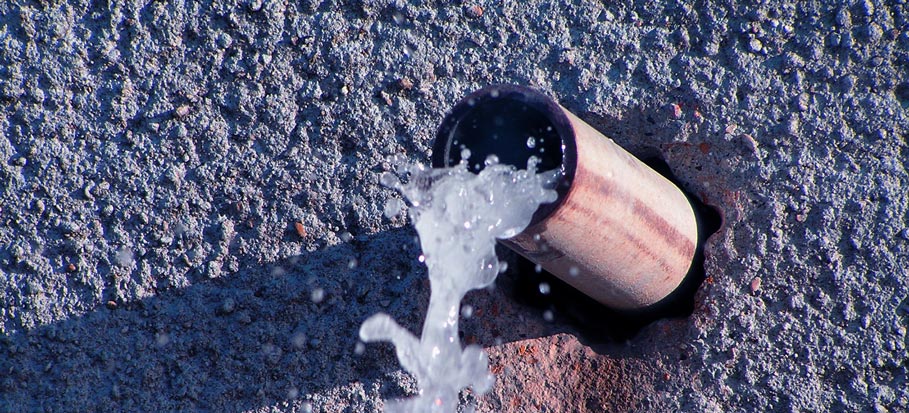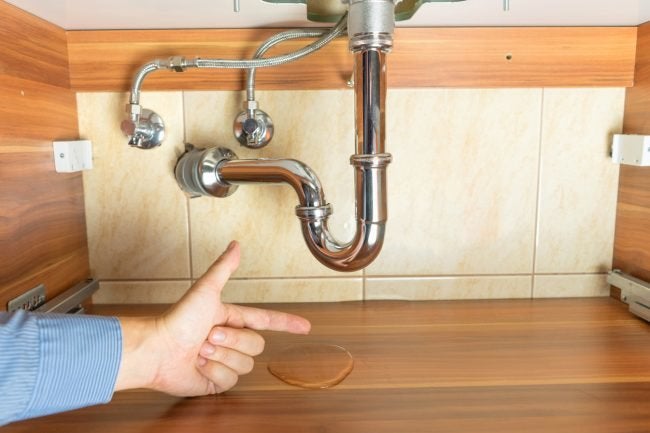The article author is making a number of good points about Locating water leaks as a whole in the article down below.

Early detection of dripping water lines can minimize a prospective disaster. Some little water leakages may not be noticeable.
1. Analyze the Water Meter
Every residence has a water meter. Inspecting it is a guaranteed way that helps you discover leaks. For starters, switch off all the water sources. Make certain no person will certainly flush, use the tap, shower, run the cleaning equipment or dishwashing machine. From there, most likely to the meter and also watch if it will alter. Considering that no person is using it, there ought to be no motions. If it relocates, that indicates a fast-moving leak. Furthermore, if you discover no changes, wait an hour or two and inspect back once more. This suggests you may have a slow leak that might also be underground.
2. Examine Water Usage
Assess your water expenses and also track your water intake. As the one paying it, you ought to observe if there are any inconsistencies. If you detect sudden changes, despite your usage coinciding, it indicates that you have leakages in your plumbing system. Remember, your water costs must fall under the same array on a monthly basis. An abrupt spike in your bill indicates a fast-moving leakage.
A steady rise every month, also with the exact same habits, reveals you have a sluggish leak that's additionally gradually escalating. Call a plumber to thoroughly check your residential property, specifically if you really feel a cozy area on your flooring with piping underneath.
3. Do a Food Coloring Test
When it comes to water usage, 30% comes from toilets. If the color in some way infiltrates your bowl throughout that time without flushing, there's a leakage in between the tank as well as dish.
4. Asses Outside Lines
Don't forget to inspect your outdoor water lines too. Test faucets by connecting a garden tube. Ought to water leak out of the link, you have a loose rubber gasket. Replace this and guarantee all links are tight. If you've obtained a lawn sprinkler, it will certainly help get it properly took a look at as well as kept yearly. One tiny leak can lose tons of water as well as spike your water bill.
5. Evaluate the scenario and evaluate
House owners ought to make it a habit to examine under the sink counters and also inside closets for any bad odor or mold and mildew growth. These two warnings indicate a leakage so punctual interest is needed. Doing regular inspections, also bi-annually, can conserve you from a significant trouble.
Examine for discolorations and also compromising as a lot of appliances and also pipelines have a life expectations. If you think dripping water lines in your plumbing system, do not wait for it to rise.
Early detection of dripping water lines can reduce a prospective catastrophe. Some little water leakages might not be noticeable. Inspecting it is a surefire means that assists you find leaks. One little leakage can lose loads of water and also surge your water costs.
If you think leaking water lines in your plumbing system, do not wait for it to escalate.
The Dangers of Undetected Water Leaks
Mold
One of the most common results of undetected water leaks in your home is mold. Under the right conditions, mold can begin to grow and spread in just a day or two.
Moisture from water leaks combined with humidity and lack of ventilation allow mold spores to germinate and start spreading.
And while household mold doesn’t carry the same health risks as substances like asbestos, they can cause allergic reactions in people sensitive to them or with asthma.
Structural Damage
When water leaks occur in places we can’t see — above the ceiling, behind walls or beneath floors — they often have time to do some serious damage before making themselves known.
You might notice cracks or bubbles appear in your walls or a slow drip or water from the ceiling.
These are signs of water leaks and buildups in the structure of your home. If you don’t jump on these problems soon enough, the wood frame that supports your house could start rotting, leading to costly repairs and increasing the risk of disasters like ceiling or wall collapses.
Water Waste
According to the Alliance for Water Efficiency, the average home can lose anywhere from 2,000 to 20,000 gallons of water per year due to leaks.
High numbers like that might make you imagine a burst pipe spewing out water. But believe it or not, even a small, constant drip from a kitchen sink could add up to over a thousand gallons of wasted water in a single year.
And if you live in a place where you pay for every gallon of water you use, that adds up to a lot of dollars down the drain. So we understand leaks are bad. Let’s take a look at some of the common (and not-so- common) water leaks you might find around your home.
Flush Valve Flapper
The flush valve flapper is a rubber flap that sits above the flush valve at the bottom of the tank. It’s attached to the flusher with a chain. Over time, it can get worn out and lose its seal, causing an endless flow of water into the toilet bowl.
These leaks are hard to detect since they’re usually silent, but there’s a little insider trick you can use with just a little dye or food coloring:
Put a few drops in the toilet tank. Check the water in your toilet bowl 15 minutes later. If any of the color made it into the toilet bowl, you’ll know what the culprit is.
Fill Valve
The fill valve is what replenishes your toilet’s tank water after you flush. If you’ve ever looked inside your toilet tank and seen water gushing out of an upright plastic valve, that’s a faulty fill valve.
https://meetflo.com/blogs/flo/how-to-find-and-repair-water-leaks-a-comprehensive-guide

We hope you liked our topic about Leaking water lines. Thanks so much for finding the time to browse our blog post. Sharing is caring. Helping others is fun. Thanks a bunch for your time. Visit again soon.